THINK GLOBAL, WATCH LOCAL!
For several years, Brian Albright has been tracking the sordid details of regional horror films on his blog, The Dead Next Door, an amazing resource for information on little-seen (and in some cases, unseen) horror flicks from all over the United States that were created far from the studio system. This past fall, he published an excellent book about the subject, featuring interviews and a state-by-state guide to the oddities that are still being rediscovered by anxious audiences looking for something unique. We’ll have a full review of REGIONAL HORROR FILMS, 1958-1990 coming up, but in the mean time, we got a chance to talk to Mr. Albright about his favorite flicks, and the difficulties in tracking down folks that are otherwise off the cinematic grid.
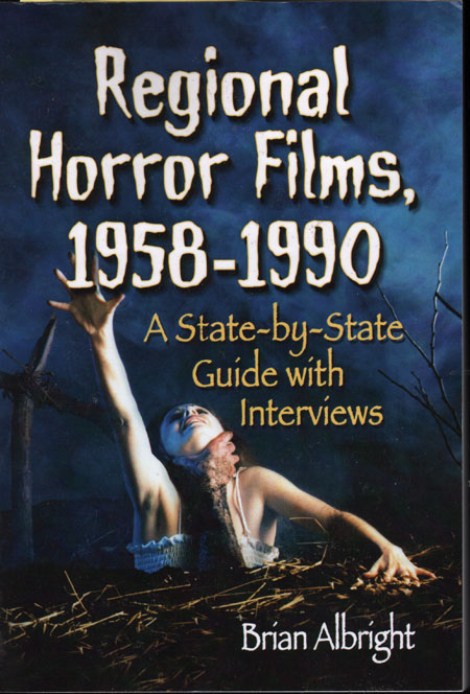
Click on the book to order from Amazon!
Paul: What made you decide to put a book together, and to format it as interviews in front, reference guide in back?
Brian: The idea has its roots in a discussion I got involved in over at the Classic Horror Film Board in 2006 about Florida horror films. That prompted a second discussion about Texas movies, and then regional films in general. I already had an idea of what a regional horror film was, and I’d always been fascinated by the idea of a “backyard” horror movie, which is how Stephen King described them in Danse Macabre. I began making a list, thinking maybe there was an article or possibly a book idea there, so I started a thread on that message board and the list just kept growing and growing. I initially thought there were maybe 100 titles; it quickly expanded based on that online discussion, and my own research.
It was a little challenging, at first, to nail down what was a runaway production versus a true “local” film, and which films were shot in what states. For a year or two, in my free time, I’d go through the IMDB’s state by state listings and try to suss out horror films I’d never heard of, or that I didn’t know were regional productions.
When I first conceived the book I thought I’d do lengthy, behind-the-scenes descriptions of all of the films. The list got so long that it would not have been possible. I didn’t want to just write a reference book/film listing, either. That’s why I added the interview section. With my lengthy introduction, the interviews (which are really kind of a cross-section of the type of filmmakers featured in the book), and the movie listings, I thought I could map out this “genre within a genre.”
P: Were there any areas of the country where you were surprised by the amount of films being made? New York and Florida were expected, but I was kind of astonished by the number that came from North Carolina or Oklahoma.
B: Yes, I knew I’d be seeing a lot of Florida/New York/Texas flicks, but there were these weird little pockets of activity that caught me off guard. Usually, they were the result of one or two very dedicated people who sort of created their own film communities from scratch. In Wisconsin, for example, you had Bill Rebane, who was more or less a one-man operation. The same was true in Oklahoma. In that case, the catalyst was VCI/United Home Video. In Arkansas it was Charles B. Pierce and Harry Thomason. In North Carolina, it was Earl Owensby. His films are largely unheard of outside of the South, but he helped get a lot of other Carolina filmmakers started, and his facilities there are used by Hollywood production companies, too. What happened there is very similar to the industry that sprang up in Utah around the Sunn Classics operation. I didn’t get into the Sunn Classics stuff in the book (I went back and forth about that, and frankly I kind of regret not including it now), but there you have an example of an independent company that created its own mini-Hollywood over time, and Utah is now one of the busiest places for filmmaking outside of Los Angeles.

The one that really surprised me, though, was Connecticut, which I guess is sort of an extension of the New York scene — LET’S SCARE JESSICA TO DEATH, LAST HOUSE ON THE LEFT, I SPIT ON YOUR GRAVE, HORROR OF PARTY BEACH, CANNIBAL CAMPOUT, ATTACK OF THE BEAST CREATURES, DEADTIME STORIES. I look at that list and think, “What the heck is up with Connecticut?”
I was disappointed that my own home state of Ohio didn’t have that many films, but I felt fortunate to be able to give some press to THE WEDNESDAY CHILDREN, which is a fairly rare film made around Wadsworth.
P: Who was the hardest person to find? Was there anyone that you’d searched for and came up with dead ends?
B: I really wanted to get Charles B. Pierce in the book, and I was trying to set up an interview via his wife at the time, but he was already pretty ill by then. It never happened, and then he died. Almost the exact same thing happened with Walter Sear, who as Roberta Findlay’s producer. He died before I could pin down an interview time. I also tried to get in touch with Carlton Albright, who made THE CHILDREN, mostly because we have the same last name. That never panned out, either.
I tried a number of times to reach Sharron Miller, who directed ALIEN ZONE/HOUSE OF THE DEAD, a horror anthology from Oklahoma. I wanted to get in touch with her because she was one of only two female directors in the book, and one of the few female directors to make a horror film during that era. I exchanged some notes with her agent, but Miller never responded.
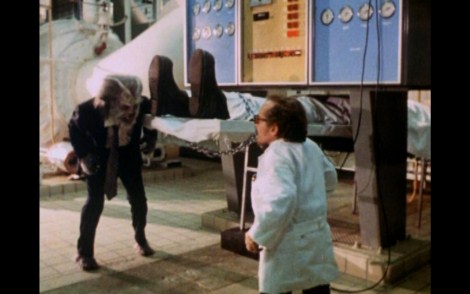
It took me awhile to get in touch with Milton Moses Ginsberg, who directed WEREWOLF OF WASHINGTON. But once I did, he was so generous with his time, and so gracious about the whole thing, it wound up being one of my favorite interviews. He gave me one of the most honest, thoughtful interviews I’ve ever conducted, and it was about THE WEREWOLF OF WASHINGTON, of all things. I like that movie a lot; I was really surprised that he seemed to still feel pained about the mistakes he made on the film, and how it ultimately came out. When we spoke he was tinkering around with it, trying to make a “director’s cut” edit that would fix the flaws he saw in it. So many of the people I’ve interviewed in the past can barely dredge up any memories of some of the low-budget films they worked, but 30 years he still had very clear ideas about what he would have done differently if he had it to do over again.
If I were to put together a sequel to the book, I’d probably talk to more of the shot-on-video guys from the 1980s, and the people who worked on those VCI/United Home Video films from Oklahoma. I’d double back and try harder with some of the folks who didn’t respond. I’d definitely want to talk to Earl Owensby.
P: Did you have any comment on the recent “re-discovery” of Chester Novell Turner?
B: As far as Chester Turner, I did spend a lot of time trying to pin down information on him. When I was writing the book, a fake Turner appeared on MySpace, then quickly disappeared. Then the guys at Massacre Video started working on a DVD release and contacted some of the people involved with the film, and as far as anyone knew, Mr. Turner was dead. And now we find out he’s quite alive.
I have mixed feelings about it, actually. Fans of this kind of stuff have always wondered: what kind of person makes BLACK DEVIL DOLL FROM HELL? Now that we can actually find out, will we be disappointed? Terrified? Upset? Part of me wants to know every tiny detail of how and why he made those films, but at the same time I’ll be sad that the mystery has been taken away. Would be people be as fascinated by the Dead Sea Scrolls if they knew exactly who wrote them and why?
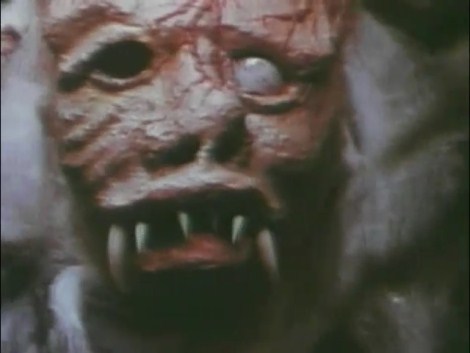
P: Was it difficult to avoid turning a description of the films into a review? A couple of mentions of Larry Buchanan, like the description of “In the Year 2889” that mentions it as “one of the director’s most coherent films.” A couple of the interviews are also blunt about his directorial abilities.
B: It was. In the case of the truly boring films, I tried to make sure it was clear that certain films were a chore, so if you have limited time (like I do) you might want to take a pass. For filmmakers with a larger body of work, I wanted to provide some indication of their best films. In Buchanan’s case, ZONTAR is obviously a must-see, but I’d say IN THE YEAR 2889 is the diamond in the rough.
When I was younger I would have taken a much more critical tone on a project like this. But my tastes have evolved, and frankly when you’re talking about films like this, it doesn’t pay to be a snob. WOODCHIPPER MASSACRE isn’t exactly my cup of tea, but a lot of other people like it. That’s fine. I was more interested in seeing how it fit in with other things that were happening geographically at that time. And for God’s sake, I’m a huge fan of INVASION OF THE BLOOD FARMERS; who am I to stare down my nose at SPLATTER FARM?
Anyone who is into this type of stuff immediately knows that Larry Buchanan and many of his contemporaries had pretty obvious directorial deficiencies. But we enjoy the films anyway, and I think it’s because those directors’ personalities come through. That’s certainly true of Buchanan, and Andy Milligan, and H.G. Lewis.
I also think many of these films really defy criticism on some level. In traditional terms some of them are awful, but as a group they’re just so … weird, and their coming from this totally unusual point of view. Many of the films were made by people who had no connection to the film industry at all, or any experience making feature films. Even the guys like George Romero or Donald Barton or H.G. Lewis who had worked in industrial films or commercials had a completely different perspective about what a film should look like. These people were shooting for the moon, and sometimes they wound up with NIGHT OF THE LIVING DEAD, and sometimes they got MANOS, THE HANDS OF FATE. One of those films is obviously better than the other, but I’d say they’re both greater than the sum of their parts.
When NIGHT OF THE LIVING DEAD first came out, almost all of the initial reviews were poor. All of the critics knocked the film because it looked like it was made by amateurs, but they really missed the point.
P: Were there any films that took so long to seek out and were based on such a reputation that you viewed them as being ultimately disappointing? I can’t imagine “Blood Circus” would ever live up to its’ notoriety.
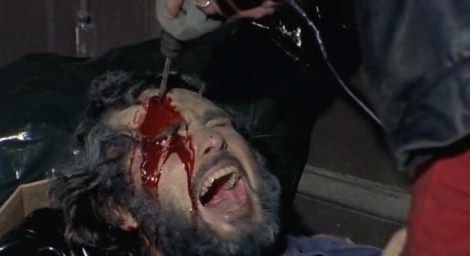
B: Off the top of my head I’d say DRILLER KILLER left me a little cold. I think my expectations of the film were just not quite what the film actually was. I’d like to revisit it with fresh eyes, so to speak. Another one that was built up in my head because of coverage I’d seen in Fangoria back when I was a teenager was Tim Ritter’s TRUTH OR DARE? There was some decent gore in it, but it didn’t really grab me. I might have responded to it differently if I’d seen it when I was in my teens or 20s. Ritter was still really young when he made it, so I imagine he’d probably take a different approach if he’d made it in his 40s instead of his 20s.
P: Conversely, what were the movies that you knew nothing about going in and became fascinated by?
B: NIGHT SCREAMS is one that I never gave much thought to until I read about its back-story: the producers financed the film via a shady loan and a fake real estate transaction. One of the guys behind it was an officer at a local bank, and he wound going to jail. Think about that: someone wanted to make NIGHT SCREAMS so badly that they risked prosecution.
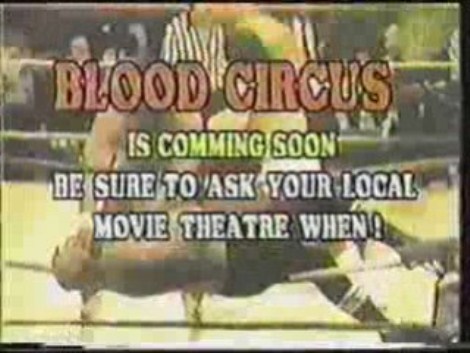
BLOOD CIRCUS is another one. PSYCHO FROM TEXAS, too. That one had a very convoluted production history, and it’s such a strange movie. There’s a foot chase that just goes on and on and on. The first time I watched it, it occurred to me that there a lot of similarities to FARGO and NO COUNTRY FOR OLD MEN, but I have a hard time believing anyone connected with those films saw PSYCHO FROM TEXAS. Or did they?
I talked to Jim Feazell, who directed PSYCHO FROM TEXAS. He’s quite a character. He was a stuntman and a director; he worked on THE WILD BUNCH and KINGDOM OF THE SPIDERS. Now he’s a Wal-Mart greeter, and he writes novels. He even has an autobiography out.
There’s another movie called THE DISTURBANCE (1989) from Florida that started out as a sympathetic, educational drama about schizophrenia, and then was re-edited into a sort-of slasher film with new footage. ISLAND CLAWS is another Florida film. I’ve always loved it, but I think I love it more now that I know it was financed by members of the Medellin drug cartel.
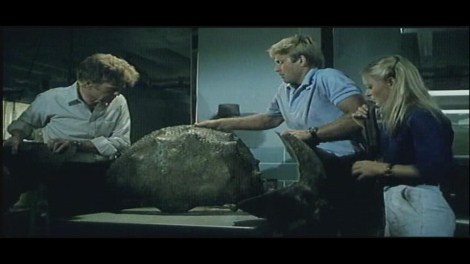
I also talked to Charles Sinclair, who co-wrote TRACK OF THE MOONBEAST. That film was made by the same people behind the GINGER series of films, and the other screenwriter was Bill Finger, a legendary comic book writer who co-created Batman.
P: Which “lost” films would you be most curious to see?
B: I’d love to see a full cut of BLOOD CIRCUS, even though I’m sure it would be atrocious. There’s a MEN IN BLACK film from Ohio (I didn’t find out about it in time for it to make it into the book) that sounds pretty fascinating. Andy Milligan’s NAKED WITCH. Pat Boyette’s THE WEIRD ONES. I’d also like to see SASQUA. There’s a brief clip on YouTube of that, and I believe a full print exists. Harry Thomason’s REVENGE OF BIGFOOT/RUFUS J. PICKLE AND THE INDIAN is another one I’m obsessed with. Most of Thomason’s stuff has been out on video at one time or another, but that one seems to have vanished completely.
I found an ad in the Fangoria Classifieds for some SOV flick called I’M NOT CRAZY. You could buy it direct from the filmmaker. What was it? I’d love to see it, too. I bet if you go through the trades or the classifieds in those old Fangorias, or some of the home video magazines that were around in the 1980s, you’d find a few dozen more homemade films like that.
The great thing about the Internet is that once people start talking about these things, they tend to turn up. Bleeding Skull ran a review of THE HACKERS, and people started bugging the guy who made it, so he put it out on DVD. For decades the only way you could see it would be to find a tape that was probably only available in mom-and-pop video stores in Michigan. Now you can get it for less than $20 and have it delivered to your house.
My hat is off to Code Red, Vinegar Syndrome, Massacre Video, Camp, Scorpion and all of these other boutique labels, for soldiering through and getting so many titles out on DVD at this point. Maybe a few more of these obscure flicks will turn up and actually get a release. I still keep getting leads about weird little local films I’ve never heard of. Ask me again in a year, and I could probably add another four or five “lost” films to my wish list.
I’ll have to say, one of the most thrilling parts of putting the book together was being able to see some of the really oddball titles for the first time, and before a lot of other people had a chance to see them. I got to watch BEAST FROM THE BEGINNING OF TIME before it was available online; THE WEDNESDAY CHILDREN was another one like that. I’m not an archaeologist, so I’m never going to experience the thrill of being the first guy to set foot in King Tut’s tomb, but pushing “play” on that Spanish-language DVD of SOUTHERN SHOCKERS may be as close as I’ll ever come. When I got that disc, I was one of maybe three or four people in the U.S. to ever watch it. Even the director had never seen a finished cut with sound.
P: You mention that you saw BEAST FROM THE BEGINNING OF TIME online. Is it available online? What would you suggest to people who would love to see that, or THE WEDNESDAY CHILDREN, or SOUTHERN SHOCKERS?
B: I actually saw BEAST for the first time on a burned DVD; it has since turned up in its entirety online. I think you can watch it on YouTube at this point. SOUTHERN SHOCKERS just isn’t available right now, except via a pretty rare Spanish VHS. THE WEDNESDAY CHILDREN occasionally plays on the Wadsworth, Ohio public access station, and the program director there actually sent me a copy. There was an official screening in Cleveland back in 2011, and I think there were some DVDs made and sold at that event. One of the guys at [Slow Mutants] was supposed to put together a DVD with a commentary track, but I don’t know if it ever came to pass.
P: In your write-up on I WAS A ZOMBIE FOR THE FBI, you note that it didn’t get an official video release until 2005 — was the Continental VHS release illegitimate?
B: You can chalk that up to my own boneheaded error. I can’t even remember why I would have written that! I might have meant that the first official release of the edited version on the Rykodisc release. At any rate, I was wrong.
P: Along those lines, did you have any issues in straightening out distribution of many of the films? I’d imagine many of these were released to VHS multiple times, and not necessarily by those that owned the rights.
B: At one point I considered trying to list all the VHS DVD releases, but as you can see from my above answer, I had trouble just keeping the easy ones straight. Distribution rights have gotten so convoluted it would take a team of attorneys and film historians to sort it out. Plenty of titles that used to be commonly available on VHS just 20 years ago are in rights limbo because there have been so many mergers in the industry. And there are even titles like the William Shatner film, IMPULSE, that might be public domain, but the rights situation is unclear, so no one feels comfortable releasing it. You can see almost anything now, whether you get a legitimate release or a bootleg, but it’s still aggravating.
P: Did you regret not including California regional films in the book? I was watching THE VIDEO DEAD last night, and thought, “this is a great example of a little movie that somehow became weirdly prominent on video store shelves in the ’80s, but it was clearly a fairly local, low-budget production.” Were there other California films that you would have liked to include?
B: Well, I did include THE MILPITAS MONSTER, which is probably the purest example of a regional film made anywhere. There are California regionals, but I found it very difficult to sort out truly regional items (like those CRAZY FAT ETHEL movies from San Francisco) from ones made by Hollywood crews who just drove a few hours north or south. I may revisit the idea of a list of California regionals. That might wind up being a blog project. Eliminating California helped me focus the book, though.
– P
- [THE BIG QUESTION] WHAT’S YOUR FAVORITE FEMALE ENSEMBLE IN MOVIES? - July 22, 2016
- [IN THEATERS NOW] THE BOY (2016) - January 24, 2016
- Cult Movie Mania Releases Lucio Fulci Limited Edition VHS Sets - January 5, 2016

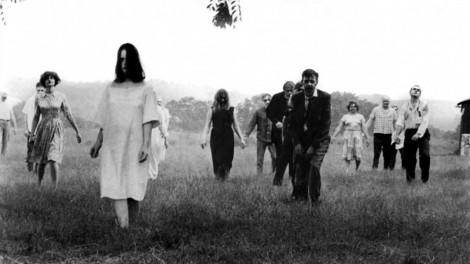




No Comments